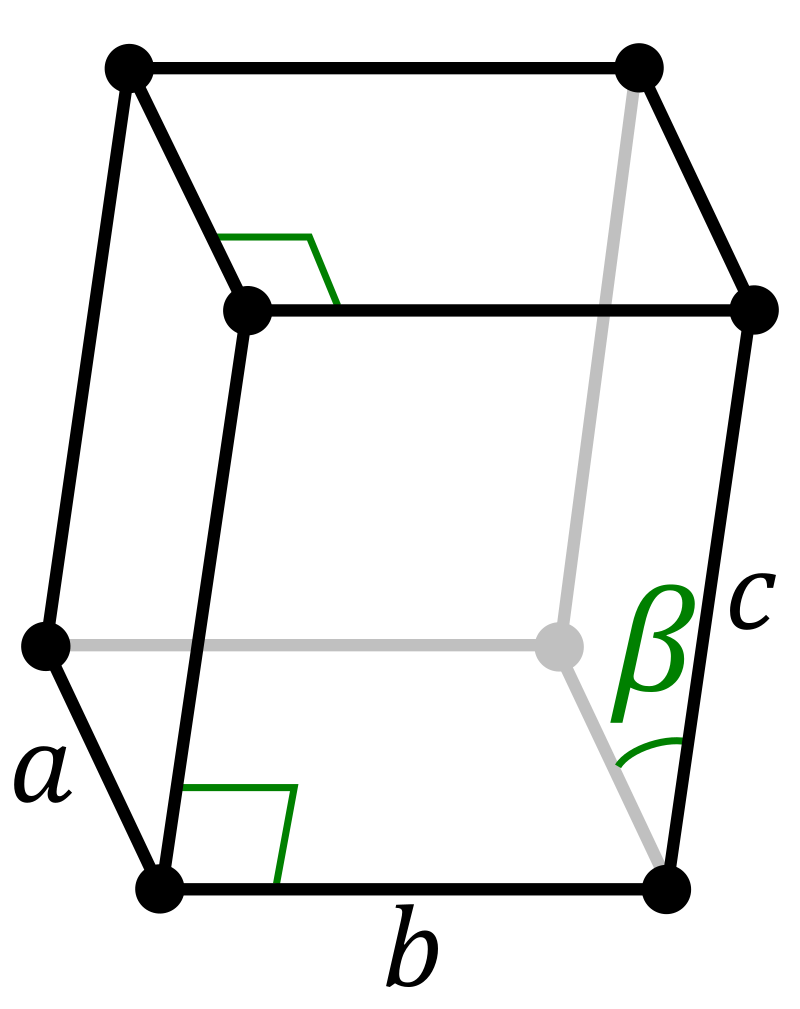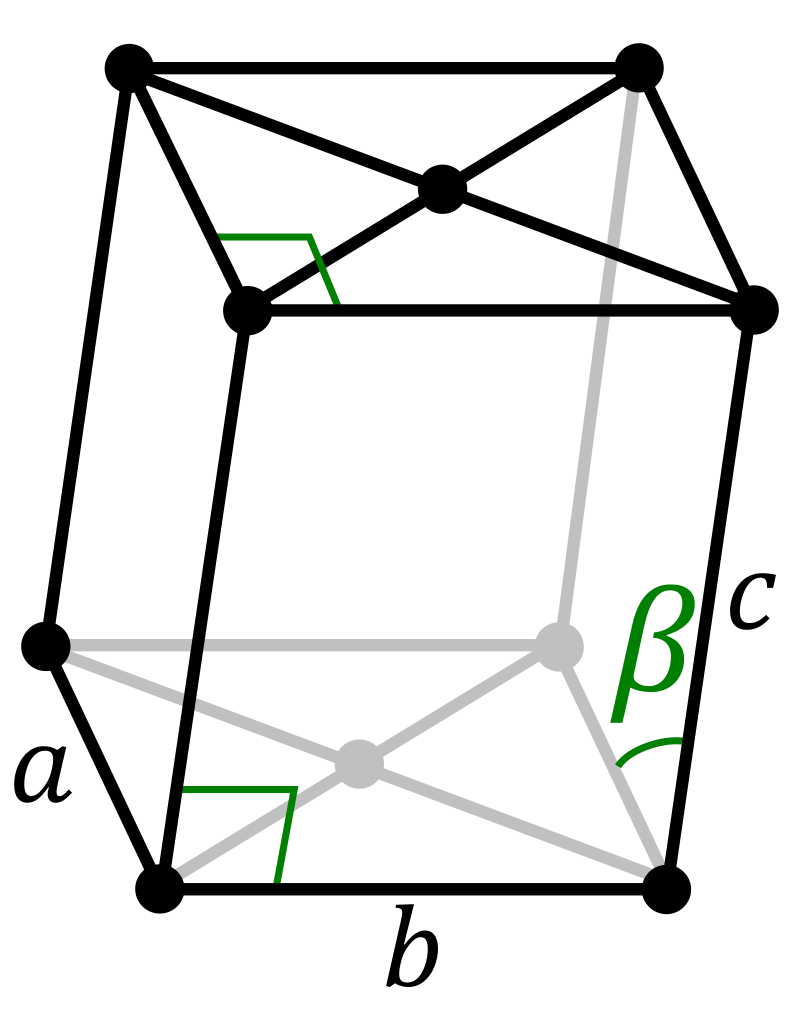Bravais Lattices – The Monoclinic Lattices
There are 2 Bravais lattices in the monoclinic crystal system. The minimum symmetry for a monoclinic crystal is a mirror plane or two-fold axis of rotation. While other unit cells exist, this mandates that there must be a unit cell representing the lattice which involves two right angles. This can be thought of as a result of the requirement for the lattice to remain unchanged under these symmetry operations. It is important to consider these causal relationships as you develop your understanding of space group theory and crystallography. They will become clearer with time and practice, but for now a diagrammatic example in two-dimensions is shown here.
The shape of the two monoclinic unit cells are identical, but they differ in their arrangement of lattice points. On the left in the image below is the primitive unit cell. Primitive refers to the lattice points arranged at the vertices of the unit cell. On the right is the base-centred unit cell. Base-centred refers to lattice points arranged at the vertices of the unit cell, and also in the centre of one of the faces of the parallelepiped. While the lattice points in the base-centred unit cell may not all look to be in the same position, when these cells are stacked to form the lattice the points at the vertices and those at the base cannot be distinguished.



The base-centred monoclinic lattice can actually be represented in a primitive cell, though this is unconventional. Consider looking at the base-centred monoclinic lattice along the b axis. This gives the representation shown on the left below. Values next to lattice points refer to their height (distance along the b axis being looked down). Where no number is stated, the lattice point is at a height of 0 and 1 i.e. at the bottom and top of the cell. When these cells are stacked, a new unit cell is possible, shown in orange. This unit cell has a different shape to the conventional monoclinic cells and has a primitive arrangement of lattice points at its vertices.


For those interested, this is shown in 3D here along with the necessary cell axis and coordinate transformations. A key feature of the monoclinic crystal system is that four lattice parameters are free to vary. This is consistent regardless of which unit cell is used to represent the overall lattice. In the conventional unit cells those free to vary are the a, b and c axes and the angle \(\beta\). In the primitive version of the base-centred unit cell, these are the a axes, the c axis and the angles \(\alpha \) and \(\gamma \).